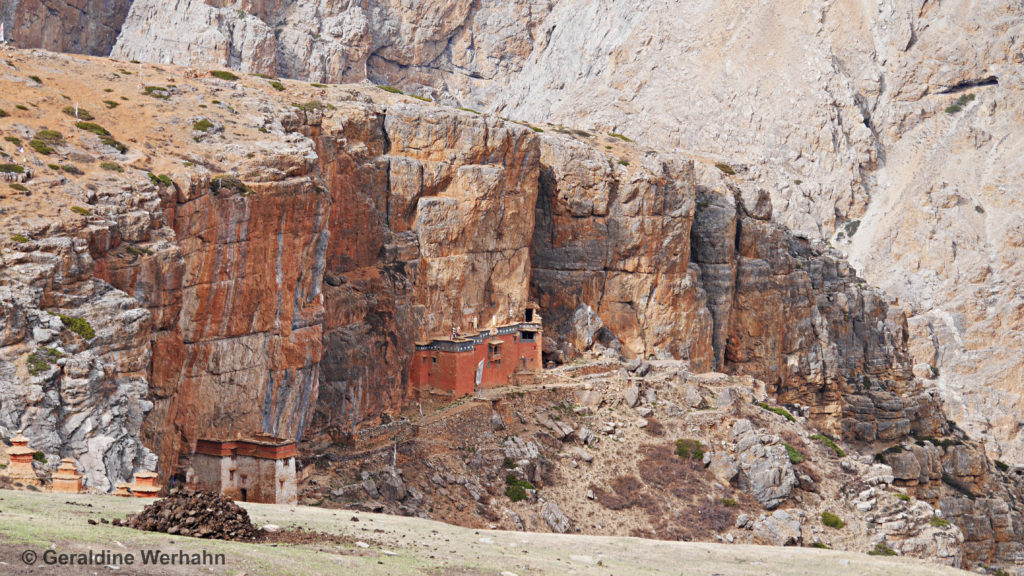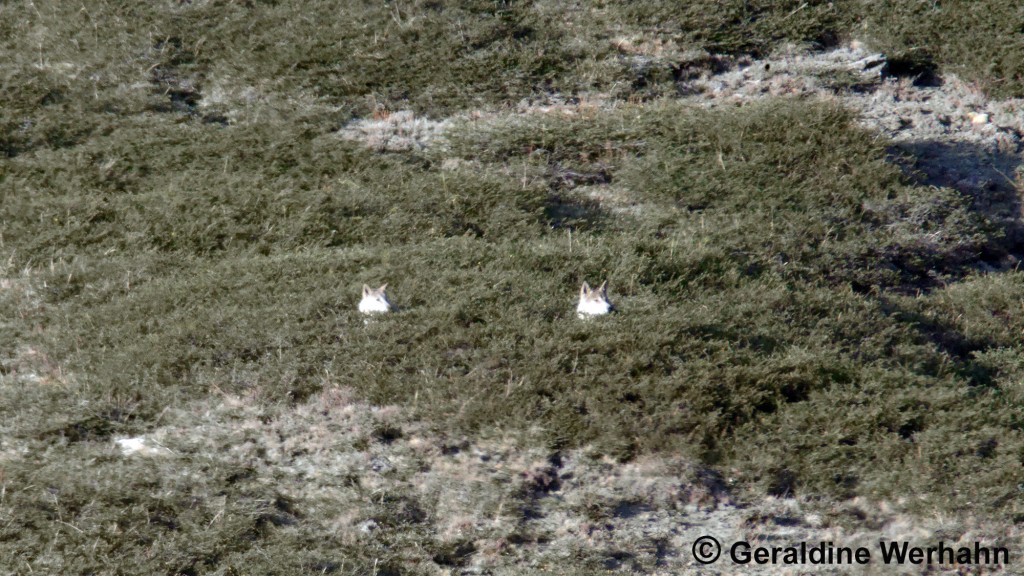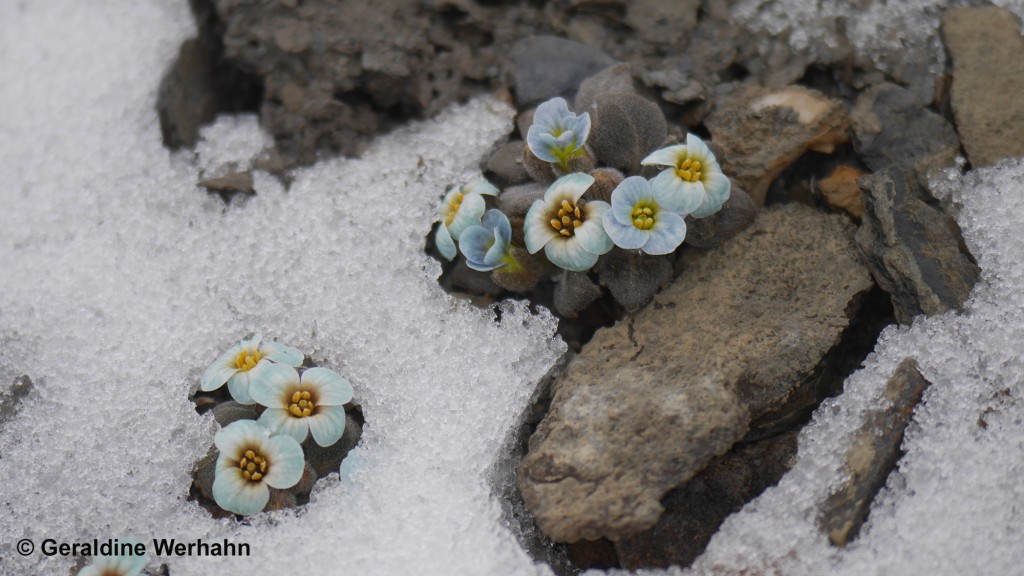Research Expedition Upper Dolpa 2016
Wolf pups playing around their den site in upper Dolpa
Upper Dolpa is a wild land with steep often scarce mountains inhabited by equally tough people. Wolves in these lands face challenging conditions due to human hostility. In 70 days we walked 810km and found 5 wolf packs, consisting of an adult pair and usually around three wolf pups. Of these five packs, all the pups of three packs had been eliminated by local people in retaliation for livestock depredation. Killing is done through smocking the pups to death with large fires at the entrance of their den site and then blocking the entrance with large stones. Locals report that the parents then try to dig the dead pups out of the den and keep on bark-howling for their pups for 10-15 days after the killings.
Wolves are an unappreciated species and conservation awareness has not reached this species yet in upper Dolpa as in many other parts of the world. However, in light of recently emerging evidence that the Himalayan wolves are being evolutionary quite different from Grey wolves, their protection in Nepal needs urgent enforcement. Shey-Phoksundo National Park extends over an area of 3,555 km² in upper Dolpa and was created in the 1984. The National Park has successfully raised conservation awareness for both snow leopards and its principal prey, the blue sheep. Snow leopard signs observed and reports by locals indicated a relatively healthy population. Blue sheep are seen abundantly and are not very shy. Ungulate flight distance is a good indirect sign of the illegal hunting intensity in an area. Livestock depredation compensation schemes are in place in few closely accessible areas of the park; unfortunately they only compensate for losses due to snow leopards but not wolves. It is time to expand conservation works to a more integral approach that includes all members of these high-altitude wildlife community.
Tibetan argali and other species share the landscape with wolves
We searched most suitable habitats in Upper Dolpo for Tibetan Argali and finally encountered one individual between Dolpo and Mustang in the Nulungsumda area. Locals report the presence of a pair in this area since five years, but to date they have not reproduced successfully. This fragile ‘population’ of Tibetan Argali needs strict protection in order for the species to establish in the area in the longer term. Other mammals we found in the study area are Altai weasel, woolly hare, Royle’s pika, large-eared pika, Stoliczka’s mountain vole. Locals also reported that wild yaks and Tibetan gazelles used to roam the far norther regions of Dolpo, but today they seem locally extinct, likely due to hunting and heavy winter snows.
Livelihood of people depends on natural resources
Natural resources, such as grassland and shrubs, in upper Dolpa are very heterogeneously dispersed. The people live a tough life of movement, migrating up and down the high mountains, trading goods between the Tibetan Autonomous Region and Nepal’s lower areas. Wood for building houses has to be brought up from lower forested parts of Dolpa involving multiple days of extremely labour-intense travel for both beast and men. Yarsagumba (Ophiocordyceps sinensis) collection brings an annual temporary mass migration to the high pasture lands, attracting local and lowland people alike to collect this strange creature, consisting of a fungus parasitizing a ghost moth larvae. It is used as a highly priced remedy in the traditional Chinese medicine.
Wolf conservation depends on improving the livelihood and education of people
In order to improve protection of these high altitude wildlife species and its habitats, the livelihoods of the local people living in these remote areas need to be improved and diversified. The protection of the Himalayan wolf is depending on increasing the awareness about its unique status as an ancient canid species and improving the enforcement of its protection through livestock mitigation measurements by conservation agencies.

Tibetan Argali Ovis ammon male representing the first documentation of a live animal in Upper Dolpo. Locals tell a male and femal Argali have been seen regularly in this same area for the last five years. Fingers crossed they can reproduce successfully and maintain a population in the area.

Wolf killing by humans in retaliation for livestock depredation: smocking the pups in their den and blocking the entrance with stones.

Humans or stones? Fake humans to deter predators from the livestock kept here at night. Other measures used by locals are sleeping by the corral, shining torch lights at night, keeping dogs chained to the corrals.

The ancient Tsakang Gumba is hidden peacefully in the cliffs and regularly circled by snow leopards.


















